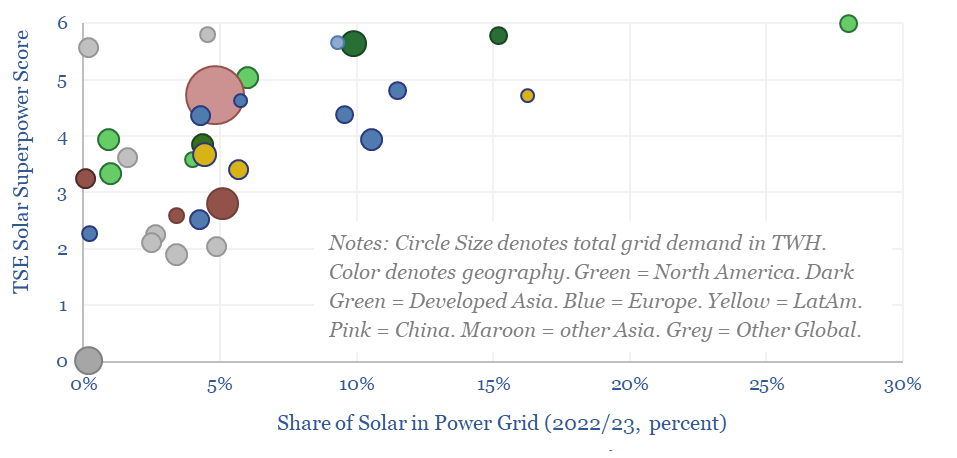Solar ramps from 6% of global electricity in 2023, to 35% in 2050. But could any regions become Solar Superpowers and reach 50% solar in their grids? And which regions will deploy most solar? This 15-page note proposes ten criteria and ranks 30 countries. The biggest surprises will be due to capital costs, grid bottlenecks and pragmatic backups.
We are amending our solar growth forecasts in this research note, using ten criteria to rank the long-term competitiveness of solar in different nations, then screening 30 different nations globally.
Solar Superpowers could be capable of ramping solar to 50% of their power grids by 2050, but we think this would require meeting ten criteria…
Criteria #1-2 relate to solar insolation, and are explored on pages 3-4.
Criteria #3-4 relate to costs, impacting both the absolute levelized costs of solar, and the cost relative to other regional power prices.
Capital costs are among the most overlooked variables. Solar projects in Switzerland can be lower cost than in the sunny Sahara. See pages 5-6.
Criteria #5-6 are linked to solar siting. Further away from major demand centers, land is more available, and at lower costs. But this is counterbalanced by the cost to move power over longer distances, especially amidst grid bottlenecks. See the charts on pages 7-8.
Criteria #7-8 relate to grid integration and backups. These challenges present the greatest risks that could cause developed world countries to fall short of their solar ambitions, per pages 9-10.
Criteria #9-10 relate to incentives and competition, per pages 11-12.
Solar Superpower Scores are calculated for 30 countries, which comprised 75% of global electricity demand in 2023, and derived an average of 6% of their total power generation from solar over 2023. Results and surprises are discussed on pages 13-14.
The ultimate share of solar might reach 50% for Solar Superpowers, but we do not see any countries reaching this threshold. Australia and California come close. Different regions are discussed on page 15.
